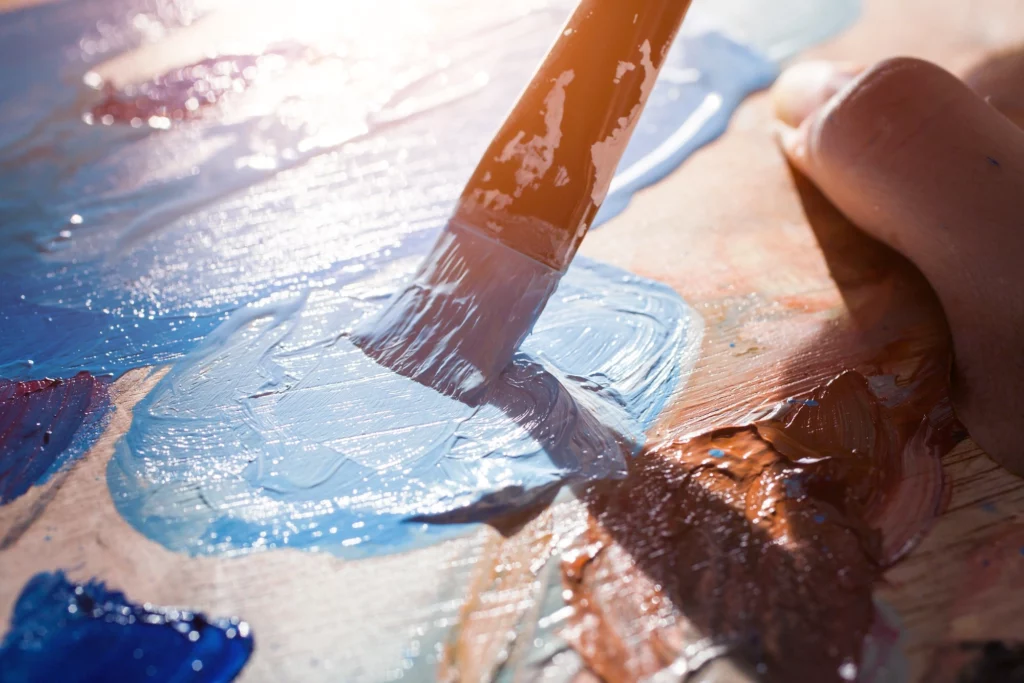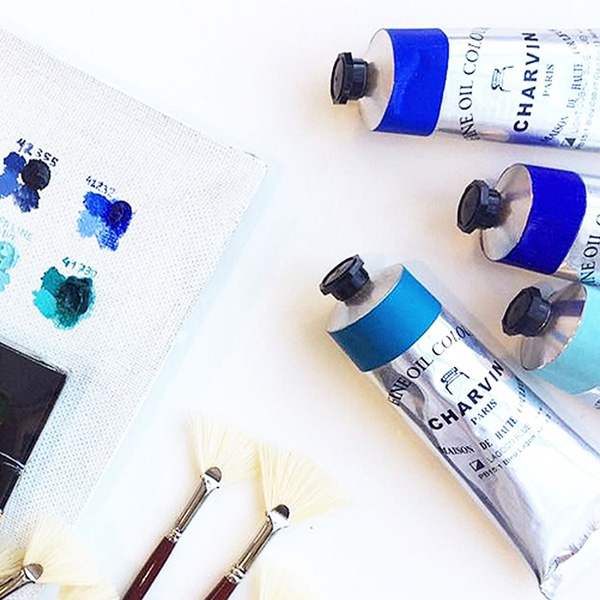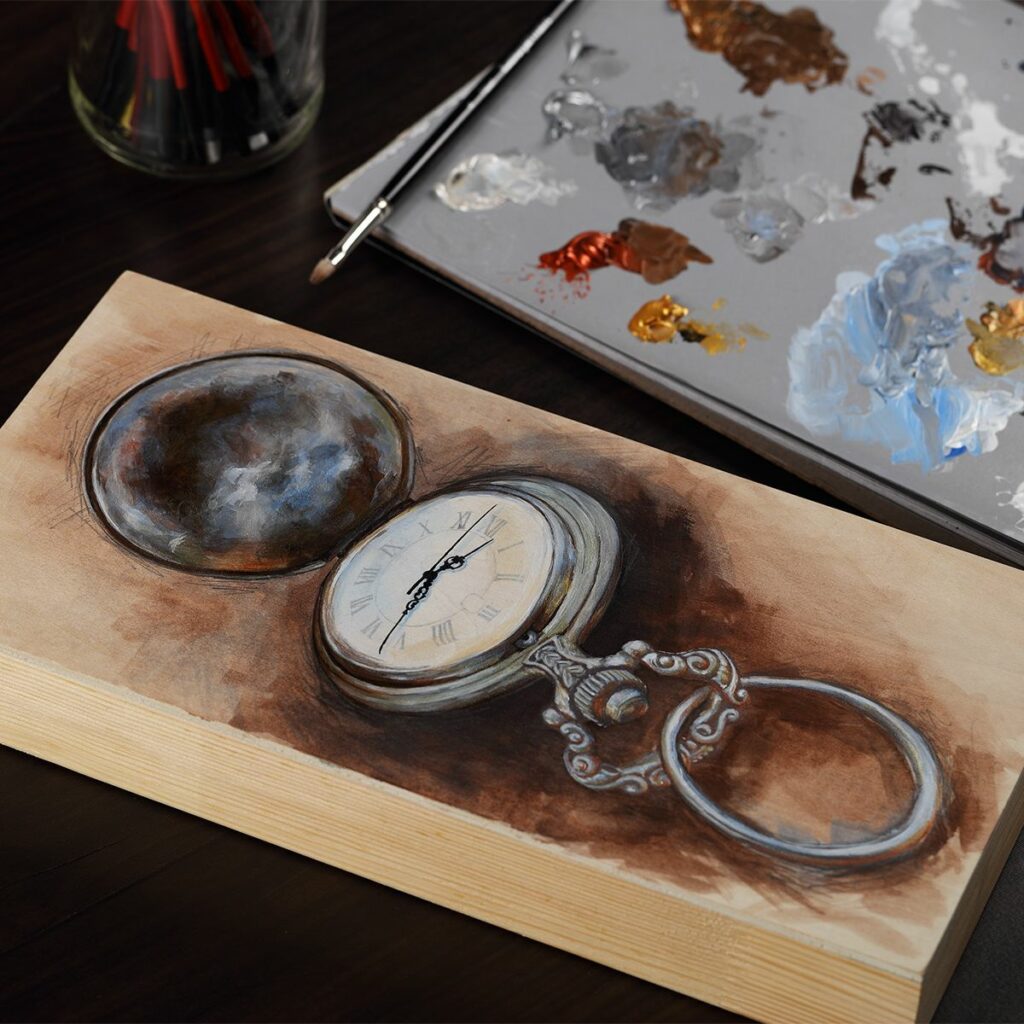What Type of Paint Should I Use? : Part 1
Comparing watercolors, oils, and acrylics..Which paint is right for you?
How to Decide What Paint to Use

Part 1: What Type Of Paint Should I Use?
People often ask: What’s the “best” or “most popular” type of paint to use?
This is a question that virtually has no definitive answer. Not what you wanted to hear?
The fact is that the “best” paint to use depends on the skill and patience of the painter, and also the type of “look” desired along with budget and desired outcome. (better quality paints have more pigment than fillers in it thus making the paint perform better, feel better and product better results.(
Different paints will give a different type of character to the subject of the painting, and evoke different types of emotions from an audience.
For example, watercolor often lends to a more muted, somewhat clouded image. While colorful, it also has a more softened look. The subject can look runny or malleable.
Oil Paints are very rich and vibrant. Oil paintings usually have a sharper image, but it’s also good for colorful pieces that feature a layering of paint. Acrylic is generally always going to give you something in between.
Depending on the technique used by the artist, artist acrylic paint can look very much like oil or watercolor, and the meshing of the two lends to a style that is uniquely its own. These are generalities; of course, the result depends on the technique and style of the artist.
Aside from the more abstract features of the products, there are fundamental differences between watercolor, oil, and acrylic paint that should be taken into consideration before choosing which medium is best for you.
Watercolor Paints
PROS: Generally the least expensive of the three paints, watercolor makes it easier to paint large areas, or spaces that do not need to be completely filled in (like a painted face on a white background). A small tube of watercolor, mixed with water, can provide yards and yards of coverage. Watercolor offers nice color saturation, and dries pretty quickly.
CONS: While the techniques for using watercolor are fairly simple in theory, they are difficult to master. It takes a special talent and lots of practice. It is more difficult to cover a mistake. It is also a more fragile method in two ways: the paper surface and the fact that one drop of water can ruin details which took hours to create.
Notable Watercolor Artists: Winslow Homer, J.M.W. Turner, and John Singer Sargent.
Recommended Watercolors:
| GOOD |
BETTER | BEST |
Oil Paints
PROS: Oil paints are associated with permanence. They are best to use for demonstrating great detail and the contrast between light and dark. Light refracts through layers of oil paint, creating a luminous appearance of depth.
Oil paints are durable and will stay solid over time — many famous masterpieces dating from the Renaissance onward are painted in oils.
Oils also come in traditional types of oils, super pigmented oils, unique high quality oils and more standard affordable oils. One advancement is they are produced to be mixed with water rather than a turpentine.
Our experts recommended: LUKAS Berlin PRO Artists Water Mixable Oil Paints
Article explaining the differences: Water Mixable Oil Paint vs. Traditional Oil Paint
CONS: Oil takes a longer time to dry (can also be a good thing to rework) – The typical drying time of oils to is usually between 6 months to a whole year. This increases your chances of making a mess or a foreign object (dust, bugs, etc.) getting stuck in the paint.
It is more expensive and, well, it’s also pretty permanent. Oil must be removed from brushes with turpentine, and it is very easy to stain your clothing and other surfaces.
Additionally, most oil paint thinners and turpentines are toxic and not particularly safe for prolonged contact.
Our experts at Jerry’s recommend: StudioSolv™ Artist Odorless Oil Thinner – a purified, odor-free oil-thinning medium
Notable Oil Artists: Vincent Van Gogh, Pablo Picasso, and Claude Monet.
Recommended Oil Colors:
|
GOOD |
BETTER |
BEST |
Acrylic Paints
PROS: Acrylic is the happy hybrid of the bunch. Like oil, it is well-suited for detail, but it is also easy to use. Artists have classified it as the most “forgiving” of the paints and best for novices.
Acrylics are also water-based which means they can be cleaned from brushes more easily.
There are also many types of acrylics such as: traditional, heavy body, soft body, medium body, fluid and more
CONS: On the other hand, acrylics can contain various toxins within their pigments. Acrylic paint dries very quickly and is not easily blended.
We’re also not quite sure how long they will last. Unlike the other paints, they have only existed for about 50 years.
Notable Acrylic Artists: Andy Warhol, Mark Rothko, and Roy Lichtenstein.
Recommended Acrylic Colors:
|
GOOD |
BETTER |
BEST |
Q: What is the best type of paint for art?
Choosing the best type of paint for art ultimately comes down to what the artist likes their unique style and the visual impact they want to achieve. Artist paints are different depends on what your painting style and needs are. The choice of paint depends on factors, such, as the artists preference, the intended impact and the type of surface being painted.
Notable Differences: Acrylic paint is versatile, fast-drying, Oil paint has a rich, buttery consistency, dries slowly and is preferred by more professional artists.
Watercolor paint is transparent and creates delicate, flowing washes of color. Gouache is similar to watercolor but has a higher pigment concentration and opacity.
Tempera paint is traditionally made with egg yolk as a binder and is known for its bright colors and smooth finish.
More Resources








